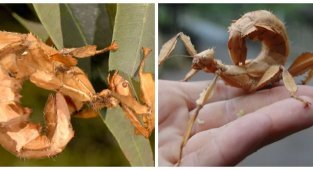Nature can surprise. But her creations can also frighten. 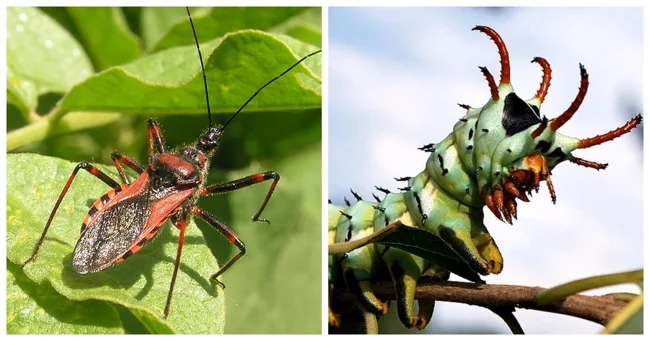
In the world of insects, incredible shapes combine with strange behavior. Its representatives demonstrate amazing diversity. Each insect is unique, but the combination of form and function of some really challenges the world of inconspicuous flies and bugs.
Mimicry of a rod-shaped creature 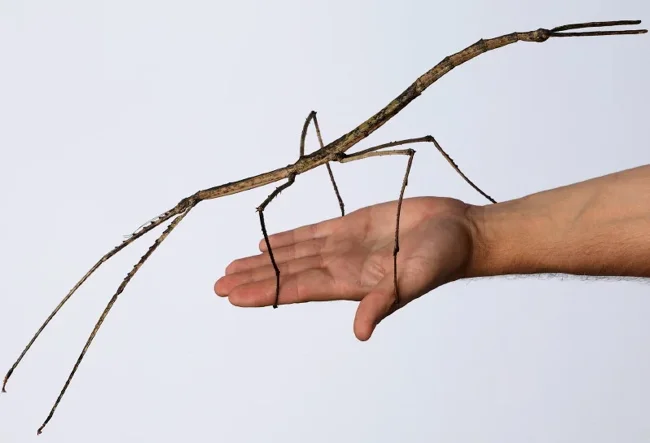
This creature exemplifies natural ingenuity in camouflage and survival strategies. Belonging to the order Phasmatodea, stick insects are known for their amazing resemblance to branches or twigs, some of which reach 30 centimeters in length. Their body shape, color and even flapping movements mimic the features of surrounding vegetation and allow them to blend seamlessly into their environment and avoid predators.
Like all stick insects, this giant stick insect can regrow lost limbs. When faced with a threat, insects may discard an injured leg or other body part in a process called autotomy. This defense mechanism not only helps them survive immediate danger, but also allows them to rebuild lost body parts over time.
In addition, some species are parthenogenetic, meaning females can reproduce without mating, allowing for rapid population growth under favorable conditions.
Titans of the insect world - giant weta 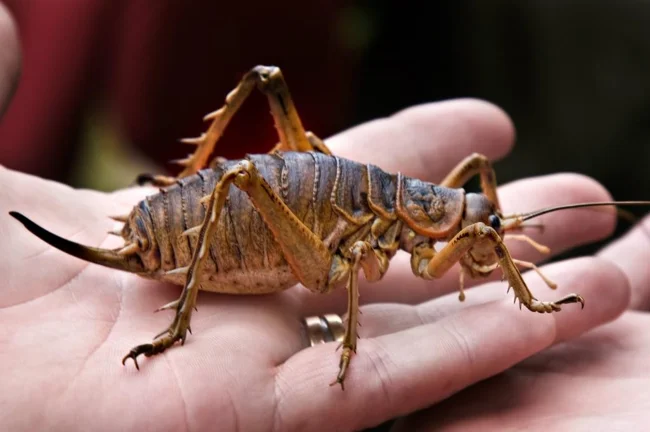
The giant weta is an insect native to New Zealand, famous for its extraordinary size. They bear the title of the heaviest insects and are among the longest in the world. The extraordinary size of representatives of the class Orthoptera is combined with such characteristic features as a strong body and powerful mandibles (mandibles). What makes the cave grasshopper even more interesting is its amazing flexibility. These insects have experienced evolutionary changes and learned to adapt to different living conditions.
Despite their monstrous appearance, these insects, so to speak, are kind-hearted and timid. They play an important role in New Zealand's ecosystems, assisting in seed dispersal and providing food for native birds.
Idolomantis' cunning hunting strategy 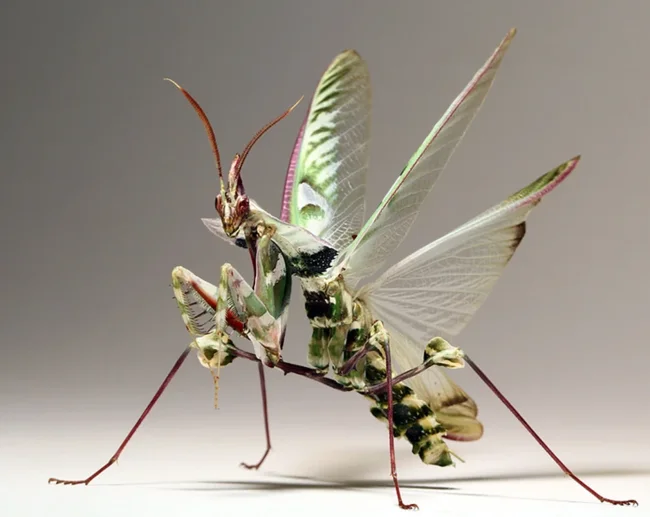
Idolomantis, commonly known as the devilish flower mantis, is an almost supernatural insect with a frightening appearance.
Native to Madagascar, this hunting mantis is a member of the Empusidae family and stands out for its alien-like features. Its body is decorated with intricate patterns and petal-like flowers, allowing it to hide among vegetation in anticipation of unsuspecting prey.
What makes Idolomantis unique is its strength and ability to blend into its surroundings. It strikes a pose like a wilted flower, luring insects in and then swiftly attacking them with a lightning-fast strike from its forelimbs.
The devilish appearance of the horned caterpillar 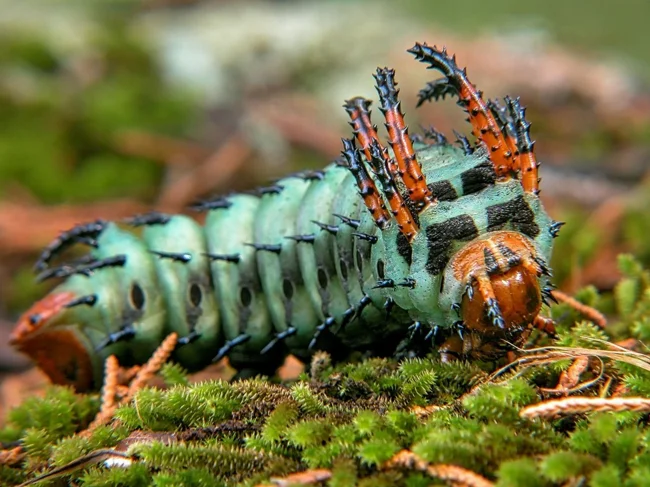
The Hickory Horned Devil (Citheronia regalis) is one of the largest and most interesting caterpillars in North America. Despite the terrifying name, this creature is harmless to humans. Their horns and spines are flexible, non-poisonous and not sharp to the touch. The caterpillar's bright turquoise-green body, decorated with long black spines and orange splashes, gives it a striking and unique beauty.
What makes this caterpillar truly impressive is its amazing size and ability to transform. Growing up to 15 centimeters in length, it undergoes a molt, shedding its exoskeleton. Ultimately, this process leads to the formation of a pupa, from which emerges a royal insect - the luxurious Cideronia regal butterfly. Of course, the butterfly no longer has any horns. The caterpillar plays an important role in its ecosystem as a herbivorous insect, feeding on the leaves of various trees.
Impenetrable armor and a powerful sting of the emerald wasp 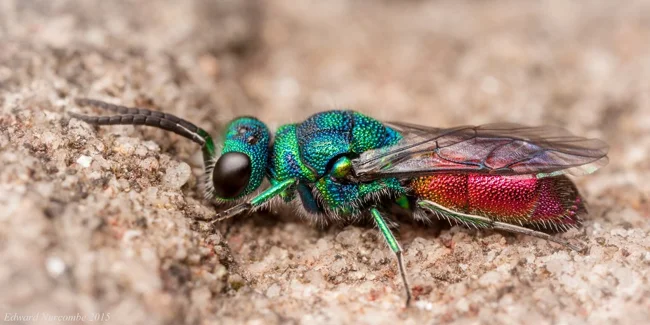
Belonging to the Chrysididae family, the cuckoo wasp is a double wonder - beautiful and dangerous. Known for their stunning metallic colors, ranging from iridescent blues and greens to vibrant reds and golds, these wasps look like flying gems. However, their incredible nature goes far beyond their visual appeal. Cuckoo wasps are named for their parasitic behavior, which mirrors the reproductive strategy of cuckoo birds. Instead of building their own nests, female birds enter the nests of other species and lay their eggs along with or instead of their hosts' eggs. This parasitic lifestyle allows them to use the parental abilities of the host, thereby ensuring the survival of their own offspring.
The powerful defense mechanism of wasps adds to their mystery. Equipped with an impressive stinger, they scare off potential predators. Despite their dangerous reputation, these wasps generally pose little threat to humans.
An impressive way of hunting 
The predatory bug, belonging to the Reduviidae family, is known for its killing abilities. They are distinguished by an unusual hunting strategy. Equipped with a special proboscis, they inject saliva into their prey, liquefying the internal tissues. The nutrients are then sucked out and only the empty shell is left.
In addition to their hunting skills, assassin beetles have impressive adaptability. They live in a variety of environments, from tropical forests to dry deserts. Some species enter into a symbiotic relationship with bacteria, helping them digest food. However, caution should be taken as some assassin bugs can spread diseases. Despite this, their versatile adaptations and hunting tactics make beetles a fascinating subject for entomologists and nature lovers.
0 comments
